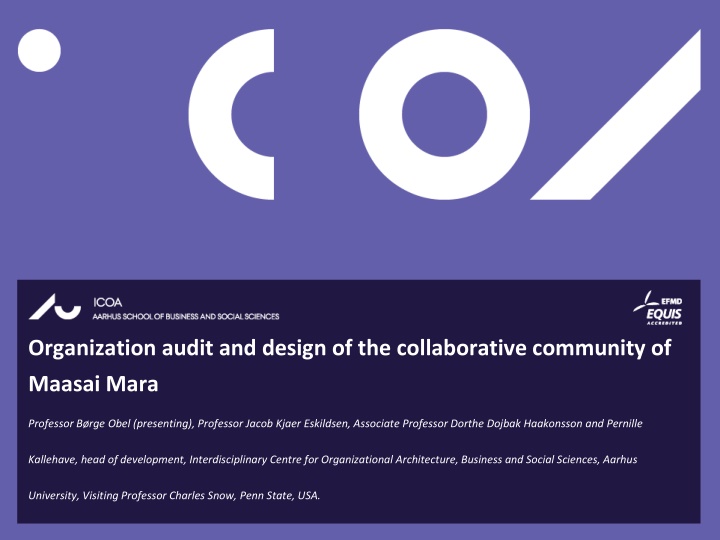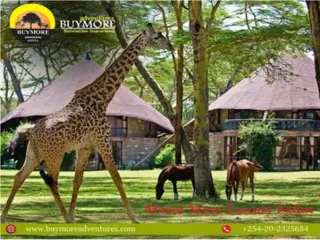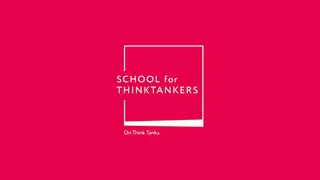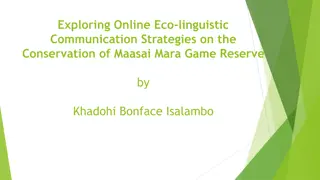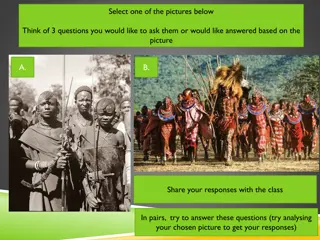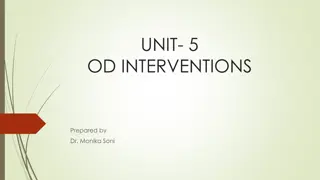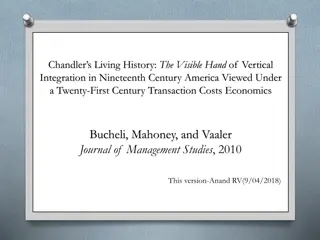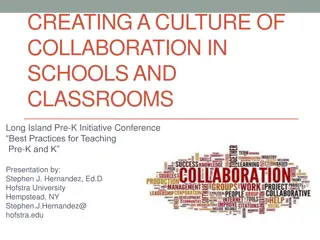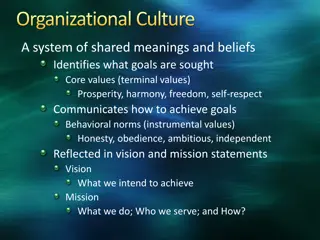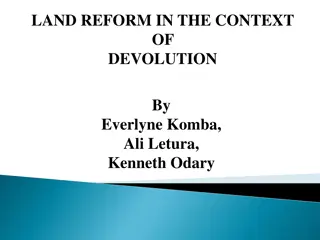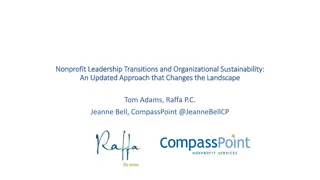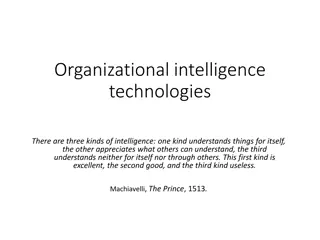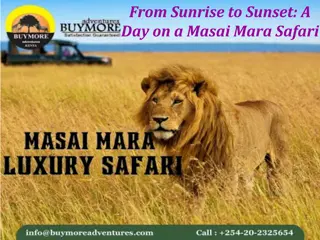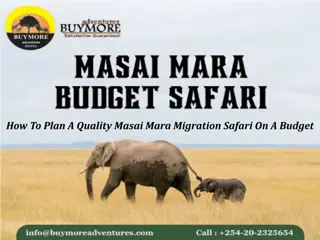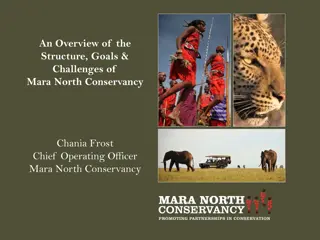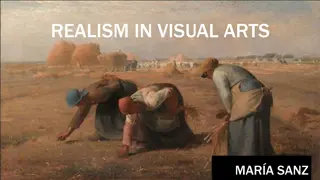Organizational Design and Collaboration in Maasai Mara
This content discusses the audit and design of the collaborative community in Maasai Mara, focusing on conservation work, stakeholder engagement, and sustainable preservation of wildlife. The process involves mapping stakeholders, identifying critical relations, and running simulated scenarios to develop a sustainable ecosystem design and implementation path. Sustainable collaboration and stakeholder audits form the basis of this multi-scholastic approach from research to action.
Download Presentation

Please find below an Image/Link to download the presentation.
The content on the website is provided AS IS for your information and personal use only. It may not be sold, licensed, or shared on other websites without obtaining consent from the author.If you encounter any issues during the download, it is possible that the publisher has removed the file from their server.
You are allowed to download the files provided on this website for personal or commercial use, subject to the condition that they are used lawfully. All files are the property of their respective owners.
The content on the website is provided AS IS for your information and personal use only. It may not be sold, licensed, or shared on other websites without obtaining consent from the author.
E N D
Presentation Transcript
AARHUS UNIVERSITET Organization audit and design of the collaborative community of Maasai Mara Professor B rge Obel (presenting), Professor Jacob Kjaer Eskildsen, Associate Professor Dorthe Dojbak Haakonsson and Pernille Kallehave, head of development, Interdisciplinary Centre for Organizational Architecture, Business and Social Sciences, Aarhus University, Visiting Professor Charles Snow, Penn State, USA.
ICOA BUSINESS AND SOCIAL SCIENCES, AARHUS UNIVERSITY Organizational Design and the Maasai Mara Challenge Grand Challenges contain Division of work Coordination of the activities ODC Challenge What is ODC The History of the ODC Challenge The future of the ODC challenge Conservation work in the Maasai Mara as a Grand Challenge
ICOA BUSINESS AND SOCIAL SCIENCES, AARHUS UNIVERSITY Conservation work in the Maasai Mara The sustainable preservation of wildlife takes place in a literal biological ecosystem in a cultural/political/commercial ecosystem of stake holders (NGOs, travelling businesses, national governments in Kenya and Tanzania, local governments, local pastoral groupings and other ethnic groups etc. The alignment of goals and incentives of the complex network of actors and interests is crucial for achieving the goal of preservation of the Maasai Mara in a sustainable manner. The division of work and the coordination of activities requires Collaborative Community thinking.
ICOA BUSINESS AND SOCIAL SCIENCES, AARHUS UNIVERSITY The audit and design process Mapping out the stakeholders and their mutual relation (economic, decisions and authority, and publicity/CSR) - an organizational audit. Applying a theoretical framework to identify critical relations in the present actors with influence on the Maasai Mara Running simulated model scenarios of the MME stakeholder network to develop sustainable design of the ecosystem as well of an implementation path.
ICOA BUSINESS AND SOCIAL SCIENCES, AARHUS UNIVERSITY Organization audit and design of the collaborative community of Maasai Mara It is based on a multi-scholastic thinking Sustainable collaboration is needed A stakeholder audit and collaboration is the basis From research to action
